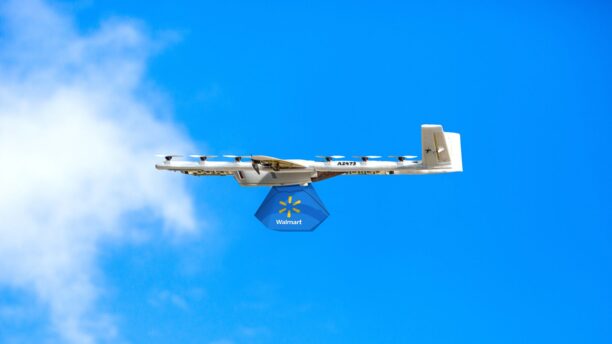New OIG Report Highlights Achievements and Persistent Challenges in Beyond Visual Line of Sight Drone Integration
The Federal Aviation Administration has made substantial progress in advancing beyond visual line of sight (BVLOS) drone operations, with approvals increasing from 1,229 in 2020 to 26,870 in 2023, according to a newly released report from the Department of Transportation’s Office of Inspector General. However, the comprehensive audit reveals that significant challenges remain in achieving the scalable, economically viable operations that the industry desperately needs.
The report, released on June 30, 2025, provides an in-depth analysis of the FAA’s efforts to integrate complex BVLOS operations into the National Airspace System through various partnership programs, including the BEYOND program and the Partnership for Safety Plan (PSP). While acknowledging the agency’s progress, the audit identifies critical gaps that continue to hinder the full realization of BVLOS potential.
Impressive Growth, But Limited Scalability
The numbers tell a compelling story of regulatory progress. The FAA has dramatically expanded its approval mechanisms for BVLOS operations, utilizing small UAS rule waivers, air carrier operating certificates, and regulatory exemptions to facilitate increasingly complex operations. The agency issued 190 BVLOS waivers by October 2024, covering 134 distinct operators ranging from public universities to energy companies.
Partnership programs have been particularly productive, with BEYOND participants conducting over 66,000 flights, including more than 44,000 BVLOS operations. The PSP and Integration Partnership Agreement (IPA) programs have been even more active, with 85,753 total flights, 94% of which were BVLOS. These operations span diverse use cases, from UPS Flight Forward’s medical supply deliveries in Florida to FedEx’s aircraft inspection operations at Memphis International Airport.
Perhaps most significantly, the FAA has begun approving operations that represent genuine industry breakthroughs. In July 2024, the agency authorized multiple operators to fly BVLOS commercial drones in the same airspace in North Texas—a first for both industry and FAA. This achievement, enabled by Unmanned Aircraft System Traffic Management (UTM) services, demonstrates the potential for truly scalable operations.
The Visual Observer Challenge
Despite these achievements, the audit reveals a sobering reality: the industry remains far from achieving the scalable operations that would unlock BVLOS’s full economic potential. Of the more than 44,000 BVLOS flights conducted under the BEYOND program, operators flew fewer than 763 flights—approximately 2%—without a visual observer. In the PSP/IPA programs, no operators have conducted flights without visual observers.
This limitation is particularly significant because operating without visual observers is widely considered essential for economic scalability. The continued reliance on visual observers undermines the cost-effectiveness that makes BVLOS operations attractive to commercial operators, as noted by multiple lead participants in the BEYOND program.
BEYOND Program Struggles with Performance Metrics
The BEYOND program, designed as a follow-on to the UAS Integration Pilot Program, established ambitious performance metrics to drive scalable BVLOS operations. However, the audit reveals that lead participants struggled to meet most of these targets.
Of the six operational Key Performance Indicators (KPIs) designed to advance BVLOS operations, participants met or exceeded only one. Only three of eight lead participants (37.5%) partially met the goal of completing eight BVLOS operational flights without a visual observer in one month, with increasing numbers over subsequent months. Just one participant (12.5%) achieved scalable BVLOS operations without visual observers.
Several factors contributed to these disappointing results. Four of eight lead participants reported that the KPIs were not properly tailored to their proposed operations. All participants cited the lack of UTM infrastructure and technological challenges as major barriers to achieving scalable operations. The program also suffered from organizational issues, including program manager turnover that affected all but one lead participant.
Data Collection Improvements with Persistent Gaps
The FAA has made notable improvements in data collection processes, implementing standardized forms and simplified reporting requirements based on recommendations from the Government Accountability Office. However, significant gaps remain in how this data is utilized for rulemaking and policy development.
The audit found that while data is collected and shared with participants, it has limited utility for informing rulemaking efforts.
The FAA does not consolidate data across all offices, limiting comprehensive analysis and trending. Additionally, the agency’s data validation process remains vulnerable to errors, with manual input processes creating potential for inaccuracies.
Perhaps most concerning, the FAA ceased collecting data on societal and economic benefits and community engagement, despite these being stated program goals. This decision limits the agency’s ability to understand the broader implications of BVLOS operations and their potential benefits to communities.
Regulatory Framework Evolution
The regulatory landscape for BVLOS operations continues to evolve, with the FAA exploring multiple pathways to enable more complex operations. The agency has made progress in authorizing operations through various mechanisms, including 44807 exemptions for operations outside traditional small UAS parameters.
The FAA has issued six Part 135 air carrier certificates to drone operators engaged in package delivery, with processing times dropping from an average of 2.5 years to between 6-8 months. For agricultural operations, the agency has approved 44807 exemptions covering 38 drone models as of April 2024.
The agency has also established the Near-Term Approval Process (NTAP) to expedite approval of third-party service suppliers, issuing its first letter of acceptance in May 2024. This process enables proven UTM services to receive expedited review when other operators seek to use those same services.
Looking Forward: Challenges and Opportunities
The audit identifies several critical areas requiring attention to achieve truly scalable BVLOS operations. The lack of mature UTM infrastructure remains a significant barrier, limiting the ability to conduct complex operations without visual observers. The FAA’s approach to performance metrics needs refinement to better align with diverse operational objectives.
The concentration of BVLOS operations among a few lead participants—with just two participants accounting for 95% of all BVLOS flights—suggests that the program may not be capturing the full diversity of operational data needed to inform comprehensive rulemaking. The agency needs mechanisms to add new participants and replace those who exit the program.
The FAA Reauthorization Act of 2024 directed the agency to publish a proposed rule for BVLOS operations by September 2024 and final performance-based rules by September 2025. As of the report’s publication, the proposed rule had not yet been issued, though a June 2025 Executive Order directed the FAA to issue a proposed rule within 30 days.
Industry Implications and Recommendations
The audit includes seven recommendations designed to enhance the effectiveness of FAA’s BVLOS advancement efforts. These include updating KPIs to better reflect operational objectives, creating mechanisms for adding new program participants, establishing consolidated data repositories, and developing formal policies for incorporating societal and economic benefit data into operational assessments.
For the drone industry, this report provides both encouragement and cause for concern. The substantial increase in approved operations demonstrates regulatory progress and growing acceptance of BVLOS operations. However, the persistent challenges in achieving scalable operations highlight the complexity of integrating drones into the National Airspace System.
The industry must continue working collaboratively with the FAA to address technological gaps, particularly in UTM infrastructure development. The success of the North Texas multi-operator operations demonstrates the potential for breakthrough achievements when technology and regulatory frameworks align.
As the drone industry continues to mature, the lessons learned from these partnership programs will be crucial for developing the regulatory framework needed to support widespread BVLOS operations. The path forward requires continued investment in technology, refined performance metrics, and sustained collaboration between industry and regulators to realize the full potential of BVLOS operations.
Read more:


Miriam McNabb is the Editor-in-Chief of DRONELIFE and CEO of JobForDrones, a professional drone services marketplace, and a fascinated observer of the emerging drone industry and the regulatory environment for drones. Miriam has penned over 3,000 articles focused on the commercial drone space and is an international speaker and recognized figure in the industry. Miriam has a degree from the University of Chicago and over 20 years of experience in high tech sales and marketing for new technologies.
For drone industry consulting or writing, Email Miriam.
TWITTER:@spaldingbarker
Subscribe to DroneLife here.


